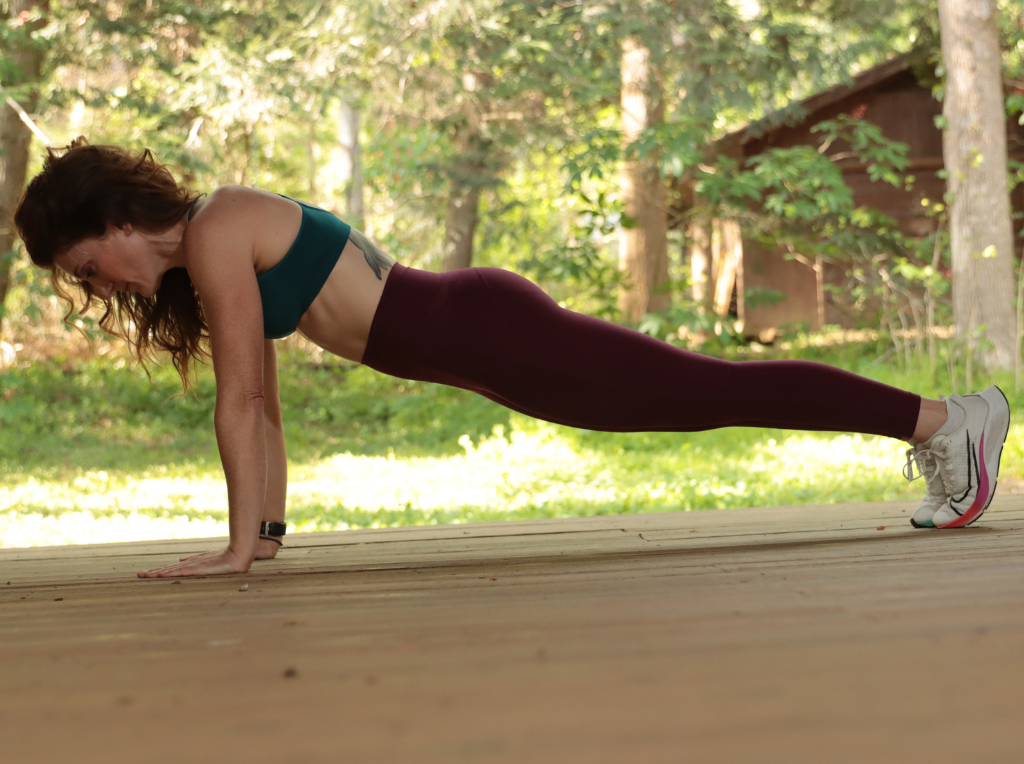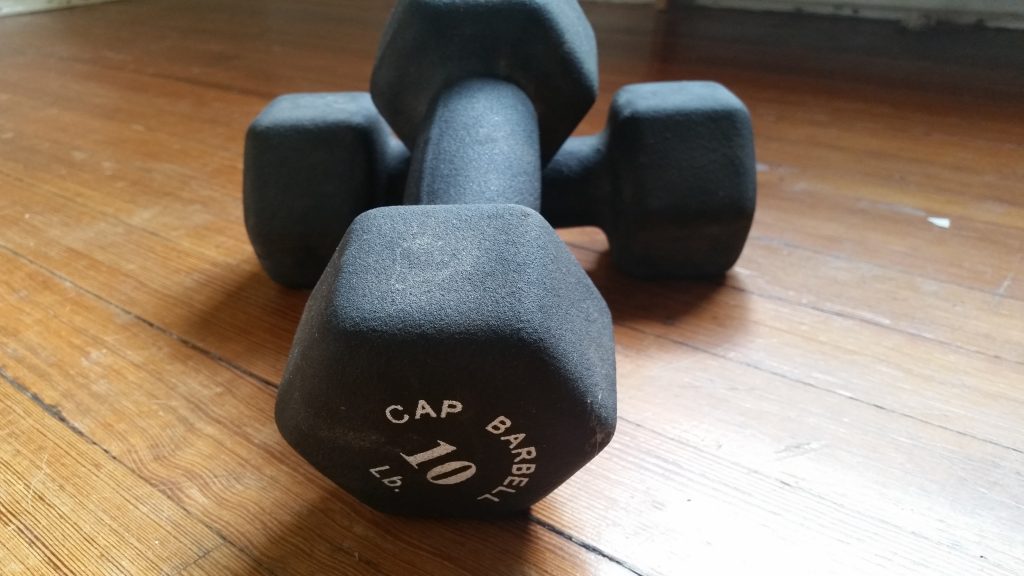Confused about strength training for runners? Here’s why and how you should be hitting the weights.
Most runners know that they need to do some kind of strength work, right? I find that there are two kinds of runners: those who know they should lift weights, but hate it so they don’t do it, and those who treat the weight room just like they do their running and attack it with all their might. The happy place is solidly in the middle.
Running should be your primary focus so you don’t want to get too excited in the gym. But simply running more and ignoring your ST is a bad idea. Strength training is a completely different physiological stimulus, that provides distinct benefits that you can’t get from running, but are crucial to health and optimal performance.
The two main benefits of building strength for runners are that it prevents injuries, and it enhances performance. Done properly, strength training creates a foundation for injury-free running and allows you to keep up with increasing mileage and intensity on your runs.
And on the performance side, studies have shown that resistance training improves running economy and endurance muscle fibers. Research has also linked weight training to better body composition and resting metabolic rates. Not to mention, strength training is particularly important as we get older, in a way that running alone is not. Recent studies have proven that running does not protect against the gradual loss of lean muscle tissue and, as we lose muscle, we also lose a larger percentage of our fast-twitch muscle fibers, which is part of why we slow down as we age.
As great as strength training is, the devil is in the dose, which means more is not better for runners. You only need a relatively small amount of ST to get the benefits you need. You should only strength train 30-60 minutes a week. That can be ten minutes a day or two days of 20-30 minutes a week. A little really does go a long way.
You can even get strong in five minutes. Here’s my favorite five minute strength routine.

The timing of your gym sessions is important. If you are lifting twice a week, you do not want to be doing that on your easy days. Easy days are meant for recovery, not for lifting weights, even if you are lifting light. The best way to complement your running is to lift on the same day as your hardest runs.
For example, if you have a tempo run in the morning, follow it by a 20- to 30-minute strength workout at noon or in the evening. That way, you adding to the training effect of the running, then you fully recover from both on easy days.
Running hard then hitting the gym also helps you avoid muscle soreness that can cause your running to suffer. If you go too hard with the weights then try to run hard, it’s not going to go as well as when you are fresh.
But I also get that most people don’t have unlimited time to exercise and two workouts on the same day isn’t always possible. That’s where the mini, 10 minute sessions come it. If you take 10 minutes a day after every run to squat, dead lift, lunge, or plank you are unlikely to overdo it, even on an easy day.
So I’ve covered when to strength train, how long, and how often. Now let’s get into what to do specifically.
Some people believe that you should really focus on your legs, because that’s what you use for running. Other people think you can go light on the legs, because running strengthens those, so you should focus on the core. And many runners have no idea what to do with their arms.
Research on runners makes it clear that upper-body, lower-body and core strength training all contribute to improved running performance. So yeah, that’s just about everything. You should do exercises that involve all of the major muscle groups, because that helps create balance as everything is connected.
The four exercises I just mentioned, squats, dead lifts, lunges, and planks are great at targeting everything a runner needs and can be done anywhere, with or without weights. So if you are stuck in a hotel room or snowed in and can’t get to the gym, 10 minutes of those 4 exercises will cover your bases.
But if you do have more time and/or access to some weights, you don’t have to limit yourself to just those. And you don’t have to stick to just body weight exercises, even if you are a beginner.

Moving your muscles against resistance can be achieved with your body weight, a resistance band, a machine or with free weights–your muscles don’t know the difference.
So a lunge, a squat and a leg press are pretty much the same exercise; they involve knee extension and hip extension working the glutes and quadriceps. Although, one could argue that the leg press machine takes away the work of the stabilizing muscles in the core because you are seated, therefore you get less bang for your buck with machines versus body weight or free weights, but the major work is done by the same muscles same no matter which you choose.
Some runners believe that they should only do bodyweight work because it’s easier and runners don’t really need to bulk up. Well, just because it’s body weight, doesn’t mean it’s easy! Pull ups, for example, are extremely challenging for most people, even though it’s just bodyweight. A better exercise for the arms and upper back for beginners would be a lat pull down, either using a machine or free weights, gradually adding resistance as you get stronger.
Alright, so you’ve chosen what to lift, but how heavy and how many reps? Actually, the number of repetitions is not critically important. The gym is not where you work on your endurance. You do that on the run. Recent research has shown that doing five reps or 20 reps will produce the same benefit in terms of muscle strength and endurance. That’s important for busy runners. All you are doing with those extra reps is working your ego and wasting time you could be running.
What’s more important than the number of times you lift a weight is how you lift them. It’s far more effective to lift and lower the weight slowly. Take two to three seconds to lift the weight and at least three seconds to lower the weight, pausing at the hardest point for a second before you lift again. A great way to remember this is similar to the title of a popular cook book for runners, but instead of “eat slow, run fast,” think “lift slow, run fast.”

The reason for the slow lift is you want to eliminate momentum. Momentum cheats your muscles because the swing is doing the work for you. In addition, the faster you move, the greater the force on your joints and connective tissue, which means greater the risk for injury. Lifting weights too quickly is far tougher on the joints than lifting too heavy.
If you are looking for a power boost, save your explosive effort for the end of each set of exercises, when you are getting fatigued. Fast movement will be impossible at this point, which protects you from its risks. But from a muscle fiber recruitment standpoint, it still is fast-twitch training. This type of strength training is safer than plyometric exercises and produces the same powerful effects.
You’ll want to lift a weight heavy enough to fatigue the muscle you are working somewhere in eight to 20 reps. You’ll know when to stop when it is impossible to complete one more with perfect form. This ensures that the muscle fiber is being completely recruited each and every lift.
So if you are taking 3 seconds to lift a weight, 3 seconds to lower, with pause in the middle, that’s 7 seconds per rep. If you choose a weight heavy enough to exhaust you in 8 reps, that’s 56 seconds per muscle group. If you divide the body into 5 major muscle groups (1. chest, 2. back, 3. arms and shoulders, 4. abdominals or core, and 5. legs and glutes), that means you can work every part of your body in about 5 minutes. Add in some time to rest between sets, and you’re done in 10 minutes.
If you’ve got more time and prefer lifting lighter weights with more reps, by all means go for it, but remember you are not running and don’t want to turn your gym session into anything aerobic. A better use of your time would be adding in different exercises. So instead of doing 20 hamstring curls, for example, do just ten to fatigue, and then do ten heavy calf raises to fatigue.
When in doubt, less is more when it comes to building strength for runners. If your goal is to become a more durable, faster runner, and keep your muscle tone as you age, a little work in the gym will go a long way!

